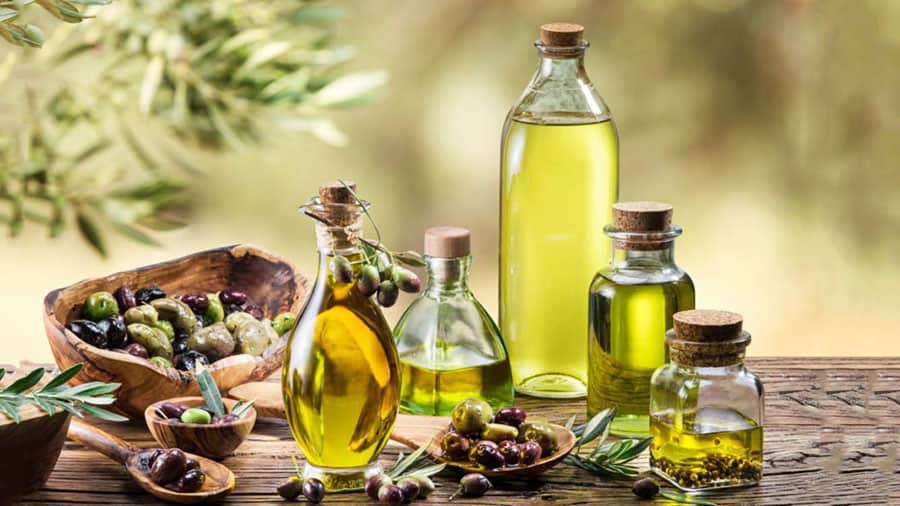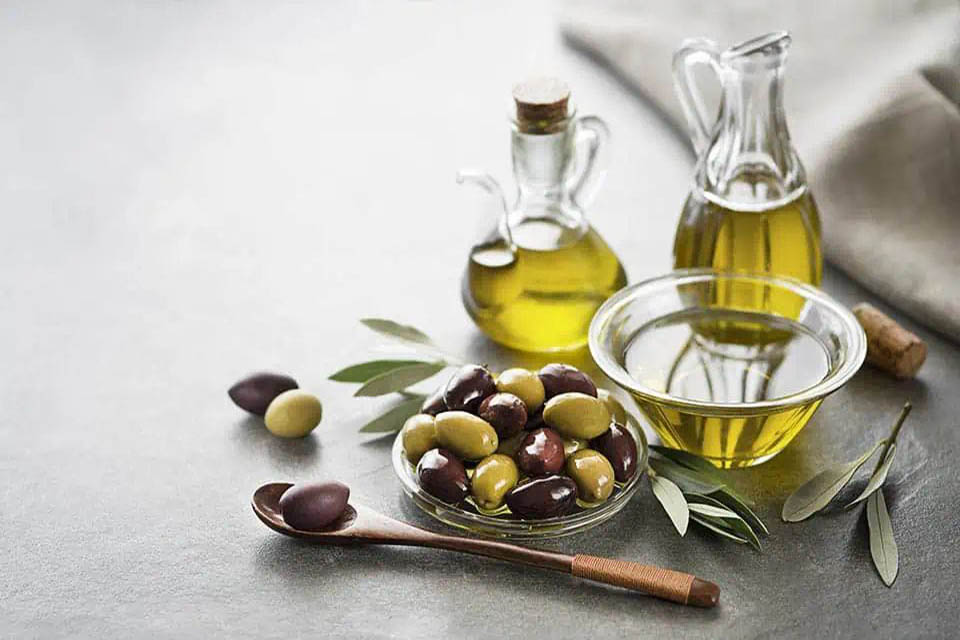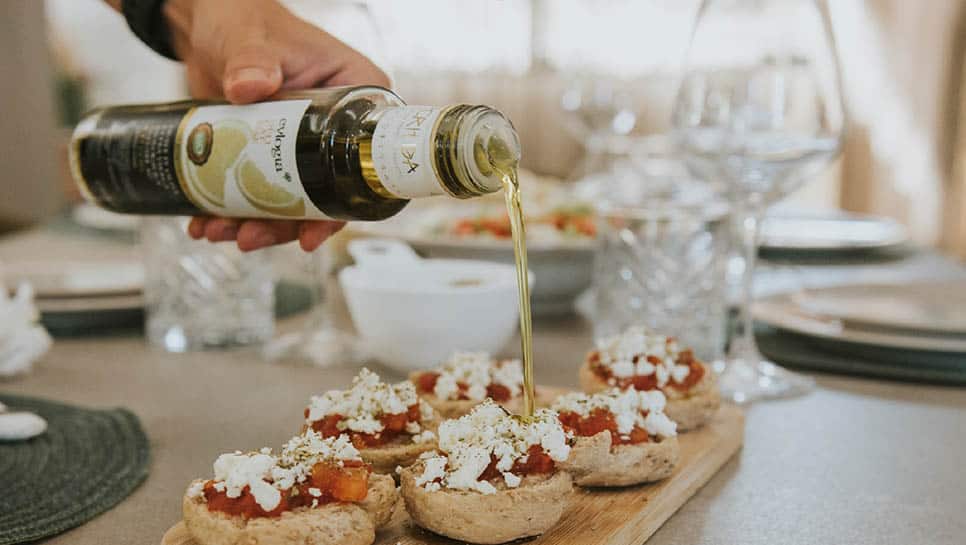Olive Tree species and varieties
Olive species and varieties (cultivars) worldwide
Olive species and varieties (cultivars) worldwide
Which are the Olive Species and Varieties (cultivars) worldwide?
The olive is an evergreen tree, with opposite, lanceolate, leathery leaves, dark green on the upper surface and silvery on the lower. Its flowers are whitish, single-petalled and very small, form a botryos inflorescence and appear towards the end of May, while the fruit ripens and is collected in late autumn and early winter. The trunk of the olive tree is nodular and covered with an ashen bark.
The olive or olive tree (scientific name Olea, Olea) is a genus of fruit trees of the family of the Olive family (Oleaceae), which is very often found in Greece. Its fruit is also called olive and olive oil is produced from it. The olive was the symbol of the goddess Athena. In Greece there are 2.700 olive mills that offer their services to olive producers, who make up 34% of the country’s rural population. In Greece during the “good production years”, approximately 300.000 tons of excellent premium quality olive oil are produced, while approximately 132 million olive trees are cultivated on Greek soil. The places most famous for their quality olive oil are Crete, Laconia, Messinia, and Lesvos. An excess of 82% of the annual production of olive oil in Greece is of the superior, premium, well known “extra virgin olive oil”, while Spain’s and Italy’s production of extra virgin olive oil is only 25% – 30% and 40% – 45% respectively of the overall olive oil production.
Olive species and varieties - The genus Olea includes the following species and varieties:
Species and varieties of the Olea genus olive tree
(Olea sylvestris), commonly known as wild olive
(Olea europaea) European olive, or common, the most commonly cultivated species around the world
(Olea aeolocarpus)
(Olea nigra dulcis)
(Olea hispanica) Spanish olive
(Olea craniomorpha), commonly known as sable tree
(Olea pendula), Pendulum olive
(Olea conica), Conical olive commonly known as the Saloniki olive
(Olea leucocarpa)
(Olea macrocarpa), commonly known as etonicholia
(Olea microcarpa), commonly known as small olive
(Olea mamillaris), commonly known as liastro
(Olea precox), commonly summer
(Olea salerniensis), salernios
(Olea contorta), commonly called contorta
(Olea rotunda virida)
(Olea subrotunda)
(Olea sphaerica)
(Olea virida)
(Olea nubrotunda), "Blue" olive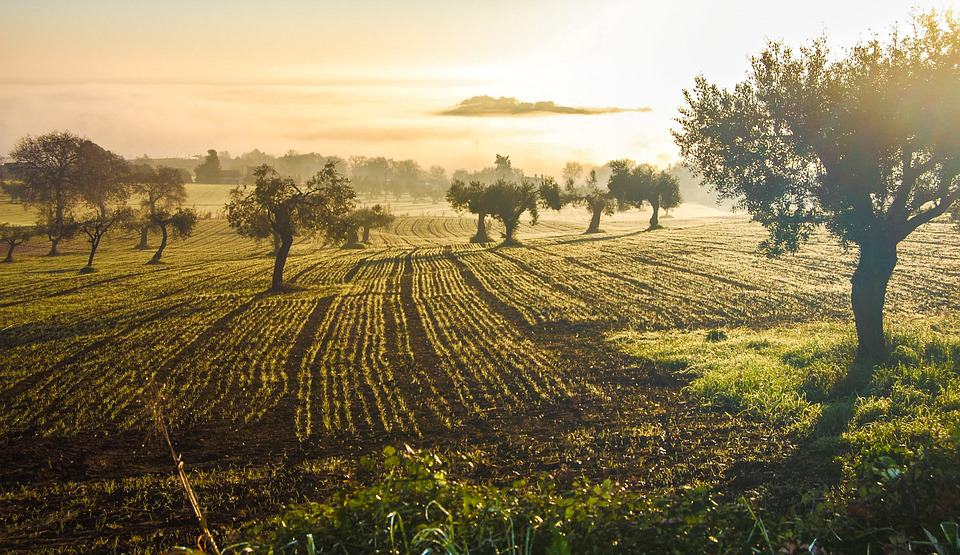
There are hundreds of cultivars of the olive – see here a list of some of the olive tree cultivars of Olea Europaea
There are hundreds of cultivars of the olive (Olea Europaea). As one of the oldest and more important domesticated crops raised by humans, the olive tree has diverged naturally and with the assistance of man into many varieties. Olive cultivars are first and foremost divided into their location of origin; most names for cultivars come from place names. Secondarily, olives may be preferred for olive oil production or for eating as table olives, though many olive cultivars are dual-purpose.
In some of these varieties, with rational selection, a greater yield in olive oil has been achieved thanks to a remarkable reduction of the kernel in favor of the flesh.
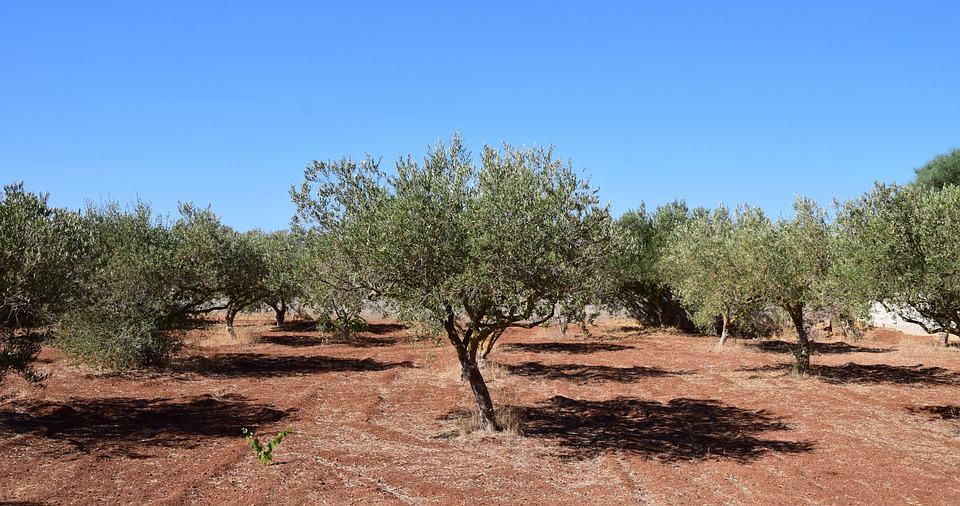
Olive groves in Greece


The olive tree thrives in temperate climates without temperature extremes (with an average annual temperature of 16°C) and humidity, which is why it is widespread in the Mediterranean area (such as in Greece, Italy, Spain, Turkey, Algeria and elsewhere). It thrives in many areas of the world, as long as the temperature does not drop too far and for long periods of time below zero. That is why coastal areas are especially suitable for its cultivation. The trees are planted in straight rows or in rhomboid arrangements. Depending on the variety and the quality of the soil, the distance between the rows ranges from 7 to 20 meters. The area where olive trees are grown is called an “olive grove”. (SOURCE: wikipedia – Olive)
The EU produces about 67% of the world’s olive oil on about 40 billion hectares in the Mediterranean countries, with many areas of the south living exclusively on olive oil production. Italy and Spain are the largest consumers of olive oil in the EU, with annual consumption of around 500.000 tonnes each, while Greece has the highest per capita consumption in the EU at around twelve kilograms per person per year.
Overall, the EU accounts for around 53% of global olive oil consumption. In terms of trade, the EU accounts for around 65% of global olive oil exports.
Outside the Mediterranean, olive growing has developed basically through the Introduction of olive tree varieties from other countries. This is the case of e.g. the United States, Argentina and Australia.
GREEK OLIVE TREE VARIETIES - Olive Tree species & varieties in Greece
Which are the Olive Tree Varieties in Greece?
In Greece, based on the size of the fruit, it is estimated that there are around 38 olive varieties that can be divided into 3 categories:
small-fruited olive varieties with a fruit weight of 1,2 - 2,6 gr
medium-fruited olive varieties with a fruit weight of 2,7 - 4,2 gr
stone-fruited olive varieties with a fruit weight of 4,6 -10,5 grAnother method of classifying the olive tree varieties is according to the intended use of the olive fruit:
Table or edible olive varieties that produce fruit for table consumption.
Oilable varieties that produce fruit for oiling, i.e. for the production of olive oil and
Dual-purpose olive varieties, i.e. varieties that produce fruit for both purposes, oil production and table consumption.The olive tree has been cultivated since ancient times and under different soil and climatic conditions. Thus we have a very large number of varieties that can and do adapt to the conditions of each region. The current varieties of the olive came from the wild olive trees with the selection of the appropriate characteristics by man, over time and with the influence of different environmental conditions. The number of olive varieties cultivated worldwide is estimated to reach 600 different varieties. This unusually large number of varieties of the olive creates a problem in its classification. The problem of classification is intensified by the fact that the same variety in different regions is known by different names. As for example the Koroneiki variety which is also known by the names: Vatsiki, Kritikia (Cretan), Koronia, Koloni, Lanolia and Psilolia.
To distinguish the varieties, various characteristics have been used such as morphological: leaves, flowers, fruits, core and productive characteristics such as: yield per tree or per acre, etc.
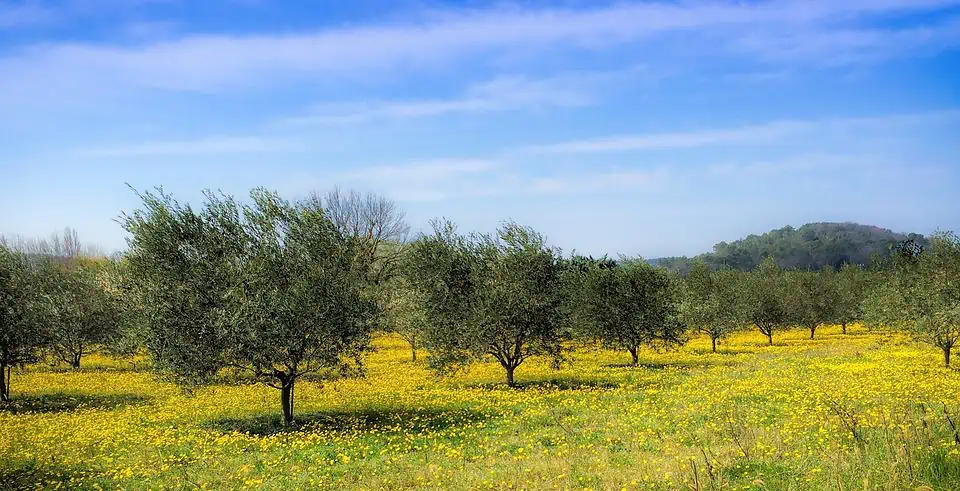
Popular Olive Tree species and varieties in Greece
Agrelia
The wild olive grows naturally in areas where the cultivated olive thrives and is a population of many variations. It usually grows on a shrub or tree. Its leaves are green, 5.90 cm long and 1.40 cm wide. The flowers are borne in sparse botryoid inflorescences. The fruit is oval in shape, average weight 1.14 g. The fruit flesh to kernel ratio is 2.4:1. The oil content of the fruit ranges from 10 – 20%. It is mainly used as a substrate for cultivated olive varieties and secondarily for the production of lower quality oil.
Koroneiki also has synonyms: Vatsiki, Kritikia, Koronia, Koroni, Ladolia, Lianolia and Psilolia. It is mainly grown in the prefectures of Messinia, Achaia, Aitolokarnania, Kefallinia, Zakynthos, Samos, Cyclades, Chania, Rethymno, Heraklion and Lasithi. It has the advantage of adapting to adverse conditions, extremely dry heat and to withstand strong winds. It can be cultivated from the coastal areas, up to an altitude of 500 meters. It grows in a tree 5-7 meters high. Its leaves are deep green, 5,47cm long and 1,03cm wide. The fruit has a cylindroconical shape with an average weight of 1.3g. The ratio of flesh to kernel of the fruit is 6,6:1. The oil content of the fruit ranges from 15% to 27%. It is used exclusively for the production of fine quality oil. The yield of the variety in fruit per tree is 30 – 100 kg. Fresh oil, regardless of its acidity, burns in the human throat when eating, a property probably due to some substance, which over time is eliminated or reduced and is no longer felt when eating. However, it can be eliminated or not be felt in the fresh oil if its fruit, during oiling, is mixed with fruit of another variety. It is considered a very productive and resistant variety in the dry areas of the country. It has little requirements for cultivation. It is resistant to cycloconium, moderately resistant to verticillium wilt and susceptible to canker. Finally, it is susceptible to dako, olive and rhychitis. The fruit ripens from early October to December.
Koutsourelia
Kutsourelia also has synonyms: Koutsouliera, Ladolia, Lianolia khondri, Lianolia fine, Dopia, Patrini and Patrinia. It is grown mainly in the prefectures of Corinthia, Achaia, Laconia and Aitoloakarnania. It grows into a tree 5–7 meters high. The leaves of this olive are deep green, 3,95cm long and 0.88cm wide. The fruit of this variety has a cylindrical-conical shape, average weight 1,2g. The flesh to kernel ratio of the fruit is 5:1. The oil content of the fruit reaches up to 25%. It is mainly used to produce medium quality oil. It is considered a demanding variety in soil moisture.
Lianolia Corfu
Lianolia Corfu also has synonyms: Korfolia, Ladolia, Nerolia, Prevezana, Souvlolia and Stryftolia. It is cultivated mainly in the prefecture of Corfu and to a lesser extent in the prefectures of Zakynthos, Kefallinia, Lefkada, Preveza and Thesprotia. It grows in a tree 12-14 meters high. The leaves of this olive are deep green, 6,67cm long and 1,49cm wide. The fruit of this variety has a cylindrical-conical shape, with one side slightly curved, average weight 2,3g. The ratio of flesh to kernel of the fruit is 7,5:1. The oil content of the fruit reaches 19%. It is mainly used to produce good quality oil. It is considered a moisture-demanding variety, which is why it thrives in areas of high rainfall and high atmospheric humidity.
Mastoid
It is also known as Tsunati, Matsolia and Mouratolia. This particular variety is cultivated mainly in the prefectures of Laconia, Arcadia (Megalopolis area), Messinia (Upper Messinia), Chania, Rethymno. It grows in a tree 6-8 meters high. Its leaves are light green, 6,18cm long and 1,18cm wide, medium in size and sharp. Its fruit is an oval, medium-sized lemon-shaped fruit with a large nipple on its top. The flesh to kernel ratio of the fruit is 6:1. The oil content of the fruit is from 20% to 30% depending on the harvest season. It is mainly used for the production of fine oil. It is a variety resistant to low temperatures that is cultivated at an altitude of up to 1000 meters. Ripens late December early January. It is resistant to cancer and sensitive to cycloconium and is moderately resistant to drought. It is considered a cold-tolerant variety.
Auntie
The tiaki also carries the synonyms. Anoisana, Thiakos, Plexidenia and Dopia. It is cultivated mainly in the prefecture of Corfu (region of Ithaca) and sporadically in the prefecture of Kefallinia. It grows in a tree 5-8 meters high. Its leaves are light green, 5,86cm long and 1,50cm wide. The fruit has an oval-cylindroconical shape, average weight 1.6g. The flesh to kernel ratio of the fruit is 6:1. The oil content of the fruit reaches 21%. It is mainly used to produce good quality oil. It is considered a productive variety and tolerant to drought and tuberculosis.
Myrtolia
Myrtolia also has the synonyms: Smertolia and Murtolia. It is cultivated mainly in the prefecture of Laconia. It grows into a tree 8-10 meters high. The leaves of this olive are light green, 3,96cm long and 0,93cm wide. The fruit has an oval shape and an average weight of 0,47g. The flesh to kernel ratio of the fruit is 3,9:1. The oil content of the fruit reaches 24%. This variety is mainly used for the production of very good quality oil. It is considered a cold and drought tolerant variety.
Mavrelia
It also bears the synonyms of Methonia and Mouratolia. It is cultivated mainly in the prefectures of Laconia and Lasithi (Crete). As a tree it is livelier and taller than Koroneiki. Its leaves are green, 5,78cm long and 1,33cm wide. The fruit has a cylindrical-conical shape, average weight 0,32g. The ratio of flesh to kernel of the fruit is 6,5:1. The oil content of the fruit reaches 19%. It is mainly used for the production of fine oil. It is considered a variety more demanding in humidity than Koroneiki. In dry areas it drops its flowers.
Tragolia
It also bears the synonym Nerolia. It is grown sporadically in the prefectures of Kefallinia and Messinia. It is a medium sized tree. The leaves of this olive are green, 5.90cm long and 1,26cm wide. The fruit has a cylindrical-conical shape, with one side curved and an average weight of 0,34g. The flesh to kernel ratio of the fruit is 6:1. The oil content of the fruit reaches 27,5%. This variety is mainly used for the production of medium quality oil.
Asprolia
This variety has an ornamental value only. As a tree, it is considered of medium vigor. The leaves of this variety are deep green, 6.62cm long and 1.04cm wide. The fruit has a cylindrical-conical shape, white color when ripe and an average weight of 0,6g. The fruit flesh to kernel ratio is 2,5:1. The oil content of the fruit reaches 12,5%. The variety cultivated in a limited area in the prefecture of Lefkada called Asprolia, which produces good quality oil, is a different variety of olive.
Melolia
This variety is found sporadically in the Prefecture of Corfu. This variety grows into a 6-8 meter tall tree. The leaves of this olive are green, 5,6cm long and 1,5cm wide. The fruit has an oval shape and an average weight of 2,4g. The flesh to kernel ratio of the fruit is 5:1. The oil content of the fruit reaches 12%. The oil produced is of inferior quality.
Chrysolia
This variety is cultivated as an ornamental. This variety grows into a 4-5 meter tall tree. The leaves of this olive are golden, 6,54cm long and 1,5cm wide. The fruit is spherical in shape. The flesh to kernel ratio of the fruit is 1,2:1.
Athinolia
This particular variety ripens slowly and is harvested from the end of December to the beginning of January. Its fruit is medium in size with an oval shape. Its weight is 2,2 to 2,9 grams and its height varies from 7,5 to 25 millimeters. The oil from Athinolia is of excellent quality with low acidity.
Ladolia (Tsounati)
It is a variety that blooms from the end of April to the end of May. Its fruit ripens from the end of October to the end of November. The size of the fruit is relatively small with dimensions from 10 to 16 millimeters and its average weight is 1,2 grams. Ladolia has a high yield index of excellent quality olive oil with low acidity.
The variety Galani (or Strogylolia or Prasinolia or Strogylorachati or Milolia) is a variety used for the production of edible and oil-making olives.
(SOURCE: Gaiapedia – https://www.c-gaia.gr/en/
Greece boasts the largest percentage of olive tree coverage per land area in the world
A list of more Olive Cultivars / varieties of Olive Trees in Greece
Olive Tree Cultivars (varieties of olive trees in Greece)
-
- Note: The below list is not considered exhaustive
| Name of Olive Tree Variety | Areas this Olive Variety is cultivated | Description of the Olive Tee Cultivar |
| Adramitini | ||
| Amfissas | Alternate name is Amphissis | |
| Amigdalolia | ||
| Athinolia | Low viscosity | |
| Chemlali | ||
| Conservolia | ||
| Daphnoelia | ||
| Frantoio | ||
| Gordal | ||
| Chalkidikis | Chalkidiki (Halkidiki) | |
| Hondroelia | Green olives, also known as Chondrolia or “donkey olives”. They have PDO status. | |
| Karidolia | ||
| Kalamatas | Messinia in Southern Peloponnese. | Usually a brown or black table olive. When picked early, known as “pink” olives (reddish color). They have PDO status for the Kalamata region. Known as “Kalamon olives” outside this region. |
| Koroneiki | Crete, Messinia, Peloponnese, and Zakynthos. | Cretan olives, referred also as elitses |
| Kothreiki | ||
| Lianolia | ||
| Mastoidís | ||
| Megaritiki | ||
| Mirtolia | Mainly Laconia | Also Smertolia/Mourtolia |
| Nafpliou | Valley of Argos in the Eastern Peloponnese peninsula. | Usually a table olive |
| Patrinia | Primarily in Aigialeia. | High oil concentration of around 25% |
| Picholine | Also Marocaine | |
| Throubes or from Thassos | Island of Thassos | Naturally wrinkled when ripe and allowed to fall into nets. The only olives that can be eaten straight off the tree. |
| Throumbolia | ||
| Tsounati (Ladolia) | ||
| Valanolia |
(source: Wikipedia – Agriculture in Greece Olive Cultivars / Varieties
OLIVE TREE VARIETIES on CRETE - Olive Tree species & varieties on the island of Crete, Greece
Popular Olive Tree species and varieties on Crete Island
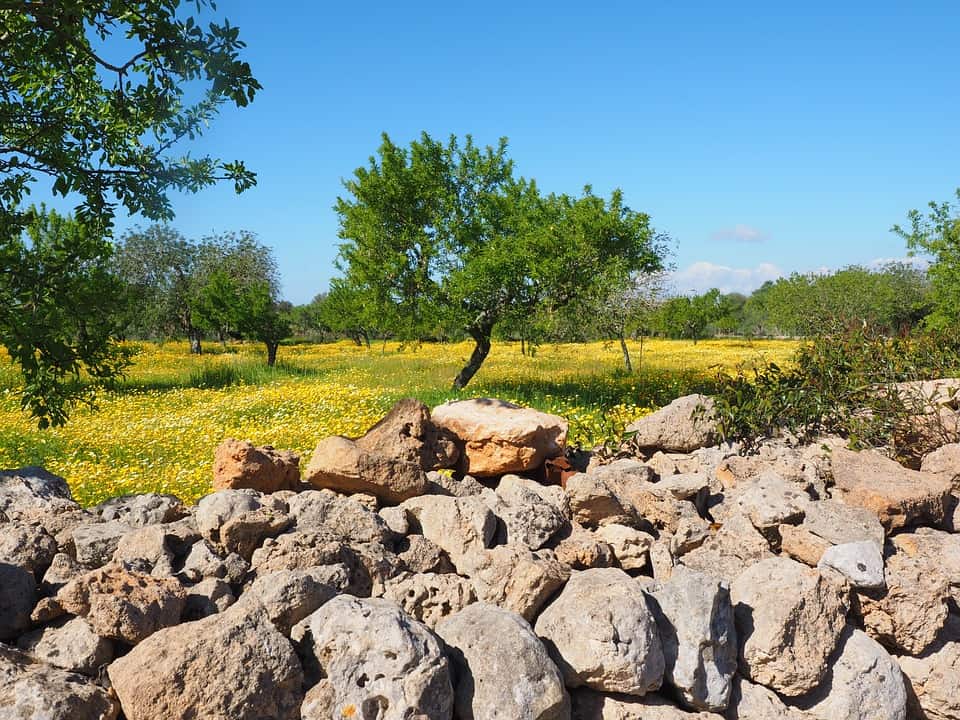
Which are the most popular Olive Tree species and varieties in the island of CRETE (Greece)?
Koroneiki or Psilolia
Chondrolia or Thrompolia
Tsunati (also called Muratolia or Ladolia)

The Oldest Olive Tree in the world is at Vouves village on Crete island in Greece
Photo of the oldest Olive Tree in the world located in Vouves village on the island of Crete in Greece
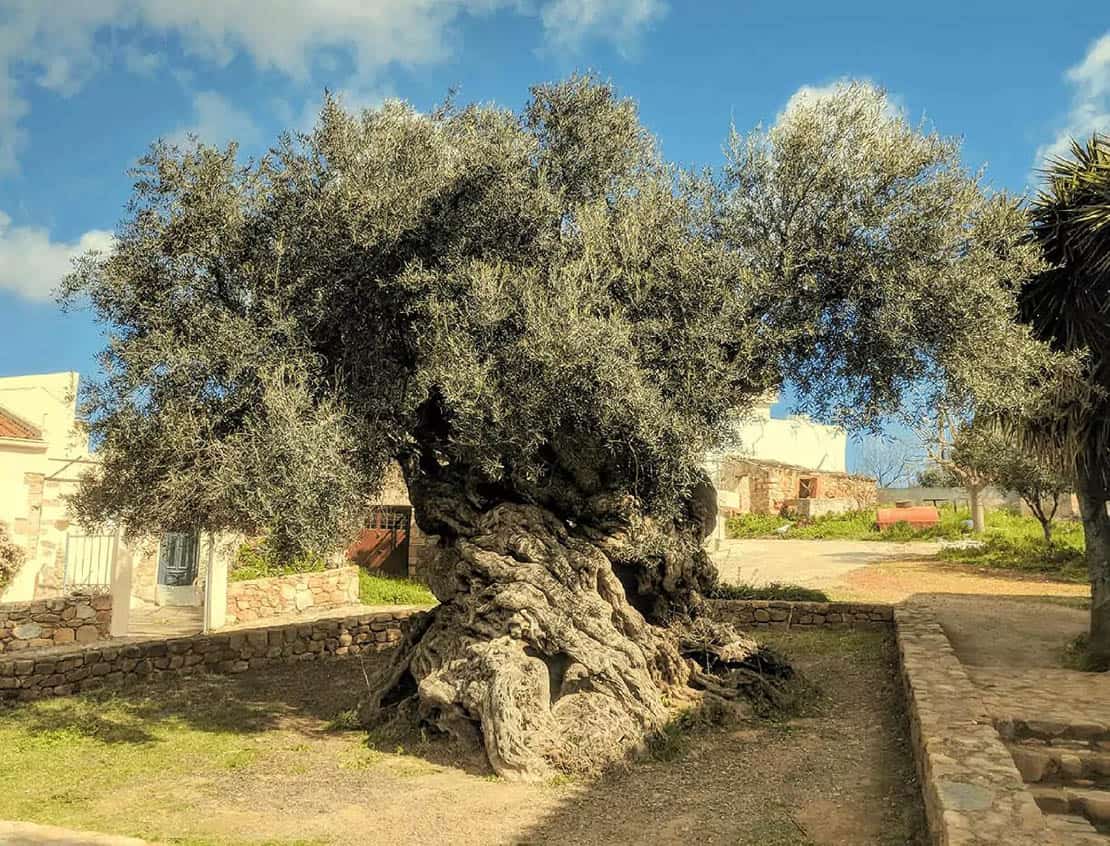
The oldest olive tree in the World in Vouves village on the island of Crete, Greece
See Also: Ancient Olives in Crete (Monumental Olives of Crete) – the amazing age-old olives of Crete Greece
Olea Oleaster (the wild-olive)
Olea Oleaster (the wild-olive), has been considered by various botanists a valid species and a subspecies of the cultivated olive tree, Olea Europea, which is a tree of multiple origins[2] that was domesticated, it now appears, at various places during the fourth and third millennia BCE, in selections drawn from varying local populations. The wild-olive (Ancient Greek κότινος/kótinos), which ancient Greeks distinguished from the cultivated olive tree (Ancient Greek ἐλαία/ἐλἀα), was used to fashion the olive wreath awarded victors at the ancient Olympic games. The ancient and sacred wild-olive tree of Olympia stood near the Temple of Zeus, patron of the games.
Today, as a result of natural hybridization and the very ancient domestication and extensive cultivation of the olive throughout the Mediterranean Basin, wild-looking feral forms of olive, called “oleasters“, constitute a complex of populations, potentially ranging from feral forms to the wild-olive. The wild-olive is a tree of the maquis shrubland, itself in part the result of the long presence of mankind.
The drought-tolerant sclerophyllous tree is believed to have originated in the eastern Mediterranean Basin. It still provides the hardy and disease-resistant rootstock on which cultivated olive varieties are grafted.
Greek wild olive varieties
Olive tree varieties considered “ancient Greek cultivars“.
Almas (Hypoparthenos)
Dryepis (Ryssi)
Ehinos
Favlia (Favlios)
Gergerimos
Goggylis
Ishas
Kallistefanos
Kolymvas (Niktris oe Vomvia)
Kotonis (Fylia)
Moria
Nitris
Orhas (Orhemon)
Rafanis
Stemfylitis
Trampellos
Why does Greece have so many olive trees?
Greece is a country with over 4.000 Year-Old Tradition on the cultivation of Olive Trees
The olive tree is native to the Mediterranean, this is the natural environment of the olive tree, which influences the taste and nutritional qualities of the olive oil produced. Greece’s geography and climate in particular provide ideal conditions for the cultivation of olive trees
The olive tree has been considered sacred by Greeks for thousands of years, since the antic era. In Greek mythology, it was the sacred tree of the goddess Athena and the city of Athens

Greek vase showing two bearded men and a youth gathering olives from a tree, by the Antimenes Painter (ca. 520–510 BC).
Selection of interesting links related to the Olive Tree & Fruit and the Olive Oil
History of the Olive Tree and Olive Oil
List of important Greek olive cultivars
Greek Table Olives species &varieties
Olive and Grapevine Biodiversity in Greece and Cyprus
How Many Olive Varieties Are There? popular olive tree varieties
List of olive cultivars (Wikipedia)
World Catalogue of Olive Varieties (book) – There are hundreds, perhaps thousands, of olive tree varieties all over the world
Greek Table Olives, the best table olives (edible olives) in the world – 21 of the 50 best table olives in the world, are produced in Greece – 8 Greek Table Olives rank in the top 10 best Table Olives
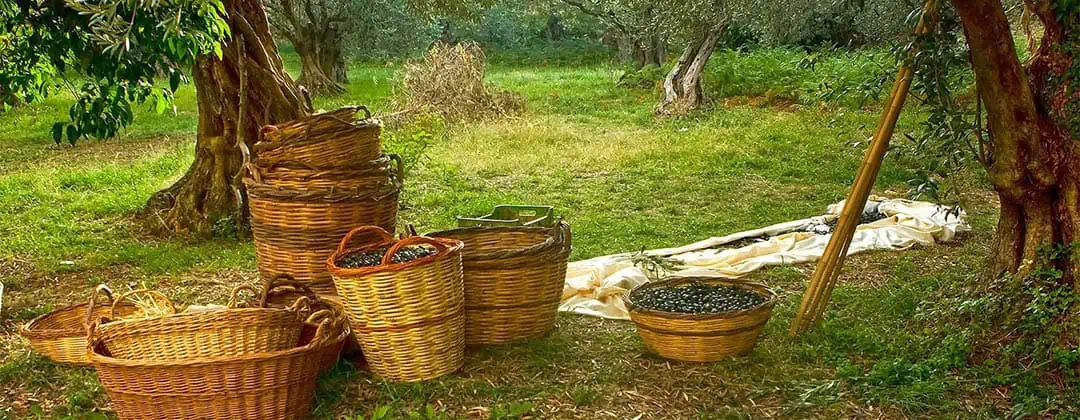
CRITIDA BIO CRETAN OLIVE OIL - Producers of Premium Cretan Culinary Products: Our Food Products are EXPORTED WORLDWIDE to 40+ countries, since 1998 - Join Us!
We are a centuries-long family company (est 1912) in the production of EVOO Olive Oil on the island of CRETE in GREECE. Our Premium Cretan extra virgin olive oil and culinary food products are exported in 40+ countries worldwide to a carefully selected network of partners. CONTACT US, BE OUR NEXT VALUED BUSINESS PARTNER ! for Extra Virgin Olive Oil (EVOO) - Organic (Bio) Extra Virgin Olive Oil (Organic EVOO) - Greek Table Olives - Balsamic Vinegars - Delicatessen, all from CRETE GREECE
Related posts
Frying with olive oil
Is extra virgin olive oil suitable for frying dishes? Frying is one of the few characteristics commo
Baby Nutrition: is Extra Virgin Olive Oil suitable for Babies & Kids Diet?
Is Olive Oil (Especially Extra Virgin Olive Oil) Good for Children’s Nutrition? Extra virgin olive
How to store olive oil – tips for correct storage of olive oil
Tips for how to store your olive oil Correct storage of olive oil Storing olive oil properly is impo
Cretan Diet
On an international scale there is much discussion about, and deep interest in, finding the ideal di


